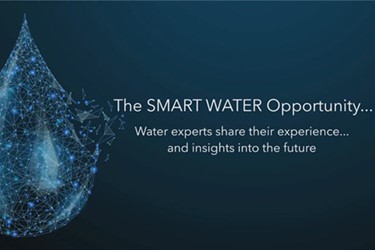Igniting A Smart Water Movement
By Katharine Cross, Strategic Programmes Manager, International Water Association; Callum Clench, Executive Director, International Water Resources Association; and Joseph Vesey, Chief Marketing Officer, Xylem

Water scarcity. Aging infrastructure. Uncertainty due to climate change. Experts from across the water sector agree that water challenges are intensifying, and that action and public awareness is a necessity. Now we have the need — and the opportunity — for those same voices to raise the volume on one of the most powerful ways to address increasing water threats: digital innovation.
Digital technologies that have transformed other sectors offer seismic potential to address water problems, and the value these technologies bring are offering bold new possibilities across the globe.
These digital solutions can work like building blocks to meet a specific utility’s needs. The benefits they deliver to communities are broad and powerful, from optimizing water supply to delivering cost and energy savings — making water more accessible, affordable, and sustainable for all.
As smart water solutions become more available across the water sector, it is the ideal time for water leaders to come together and ignite a conversation on how to accelerate the smart water movement. If we can build a confluence of voices, we can create a tipping point and spur more water operators to join the digital revolution and, in doing so, advance water security for communities around the world.
Recently, we had the opportunity to participate in a video of smart water experts and users who are helping drive the digital transformation of water. From water utility customers to technology providers to industry influencers, each told a story of vision and optimism. Just as importantly, each spoke about the gains that smart water technologies are generating right now. The future of water is here.
Turning Up The Volume On Smart Water
For example, K-water in South Korea was looking for new ways to address water challenges such as aging infrastructure and public perceptions in relation to drinking water quality. In the city of Paju, the use of intelligent analytics and a smart network has provided greater transparency and confidence.[1] This has helped increase consumer use of municipal drinking water from 1 to around 35 percent.
In South Bend, IN, the city and its inhabitants faced a major environmental and economic threat from regular combined sewer overflows, with sewers that would overflow into the St. Joseph River virtually every time it rained. City officials embraced an innovative, artificial intelligence-powered solution that includes a system of smart sensors and actuators that redistribute water back and forth within a sewer system to avoid flooding when a storm hits. As a result, overflow volumes have been reduced by more than 70 percent, preventing more than 1 billion gallons a year of polluted water from entering the St. Joseph River — saving the city an estimated $500 million in capital work. Eric Horvath, Public Works Director, City of South Bend, said: “We were able to take a $700 million program and for the same environmental benefit, not changing the level of service… do that for $200 million just by optimizing the existing system in the ground.”
A Smart Movement
These stories are increasingly being replicated across the world. Studies have shown that the adoption of smart water solutions can transform the economics of water and wastewater utilities, with a Global Water Intelligence report revealing potential savings on capital and operational spending of nearly $320 billion over the period 2016 to 2020. In Europe, the adoption of digital water technologies — shown to improve energy efficiency by more than 15 percent[2] — is also a powerful way to support EU-member States in reaching their 2020 sustainability targets set by the EU. In 2018, the European Commission proposed updates to the drinking water directive, to improve the quality of drinking water, reduce water losses, and provide greater transparency to citizens on energy and water efficiencies. This smart movement from EU institutions will add further fuel to the quest to manage water in a resource-efficient and sustainable manner.
Given the resource issues now confronting our planet and the growing challenges of water scarcity, affordability, and resilience, the water sector has a clear mandate to think differently about the important work that we do. We have an opportunity — and an imperative — to redouble our efforts, exploring new avenues to deepen collaboration and innovation across the water sector and accelerate our transition to a smart water future.
But to realize this potential, those of us who work in smart water technologies, benefit from them, or advocate for them also have an opportunity — and an imperative — to speak out and urge more water decision-makers to embrace digital water and take the step to a smarter and more sustainable future for water for all.
Leaders across our sector agree that smart water solutions offer new ways for the industry and urban planners to fight back against climate change, and to address our shared challenges and opportunities.
[1] Smart Water Management, Case Study Report, IWRA & K-Water, 2018, https://www.iwra.org/wp-content/uploads/2018/11/SWM-report-final-web.pdf
[2] Bluefield Research
